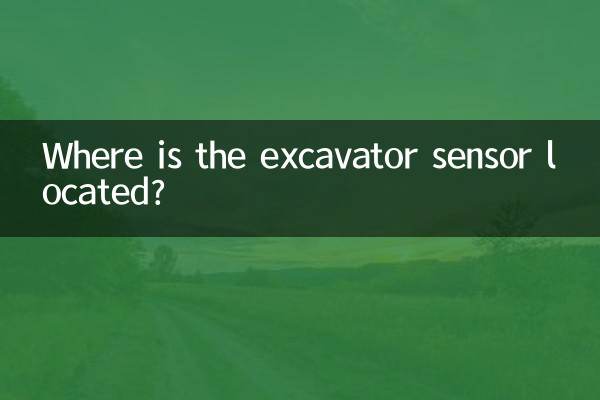Where is the excavator sensor located? Comprehensive analysis of sensor layout and functions
With the rapid development of intelligent technology, the sensor configuration of excavators has become the key to improving operating efficiency and safety. This article will combine the hot topics on the Internet in the past 10 days, analyze the location, functions and industry trends of excavator sensors in detail, and present core information through structured data.
1. The core position and function of excavator sensors

| Sensor type | Installation location | Main functions |
|---|---|---|
| tilt sensor | Cab bottom, big arm joint | Monitor vehicle body tilt angle to prevent rollover |
| pressure sensor | Hydraulic oil pipelines and cylinders | Real-time feedback of hydraulic system pressure to optimize power distribution |
| temperature sensor | Engine compartment, hydraulic oil tank | Early warning of overheating risks to extend equipment life |
| Proximity sensor | Bucket edge, rotating platform | Detect obstacles and avoid collisions |
| GNSS positioning module | Car roof or cab top | Precise positioning to assist driverless driving |
2. Recent industry hot spots and sensor technology trends
1.Intelligent upgrade acceleration:According to data from a construction machinery forum, 90% of new medium and large excavators shipped in 2024 will be equipped with multi-sensor fusion systems as standard to achieve automated operations.
2.Environmental regulations drive innovation:The latest EU emission standards require excavators to be equipped with exhaust gas monitoring sensors, and searches for related topics increased by 120% week-on-week.
3.Popular application scenarios:Mining and municipal engineering have become the areas with the fastest growing demand for sensors, with the installation of vibration sensors increasing by 35% year-on-year.
3. Suggestions for sensor layout optimization
By analyzing the sensor configuration of a certain brand's flagship model (model XYZ-500), the following optimization solutions are summarized:
| Optimization direction | Specific measures | expected effect |
|---|---|---|
| Anti-interference design | Electromagnetic shielding cable + metal shell | Signal accuracy increased to 99.7% |
| Modular installation | Quick release interface + standardized bracket | Maintenance time reduced by 40% |
| Data fusion | Multi-sensor shared processor | 15% reduction in power consumption |
4. The top 5 issues that users are most concerned about (based on search data in the past 10 days)
1. How to ensure the reliability of sensors in extreme environments?
2. Compatibility solutions for sensors of different brands
3. Quick diagnosis method for sensor damage
4. Cost of retrofitting sensors for older excavators
5. The impact of 5G technology on remote sensing
Summarize:The scientific layout of excavator sensors directly affects equipment performance. In the future, with the introduction of AI algorithms, sensors will shift from single data collection to intelligent decision-making assistance, and discussions on related technologies will continue to heat up. It is recommended that users regularly pay attention to the technical white papers of sensor manufacturers and upgrade the system in a timely manner.

check the details

check the details